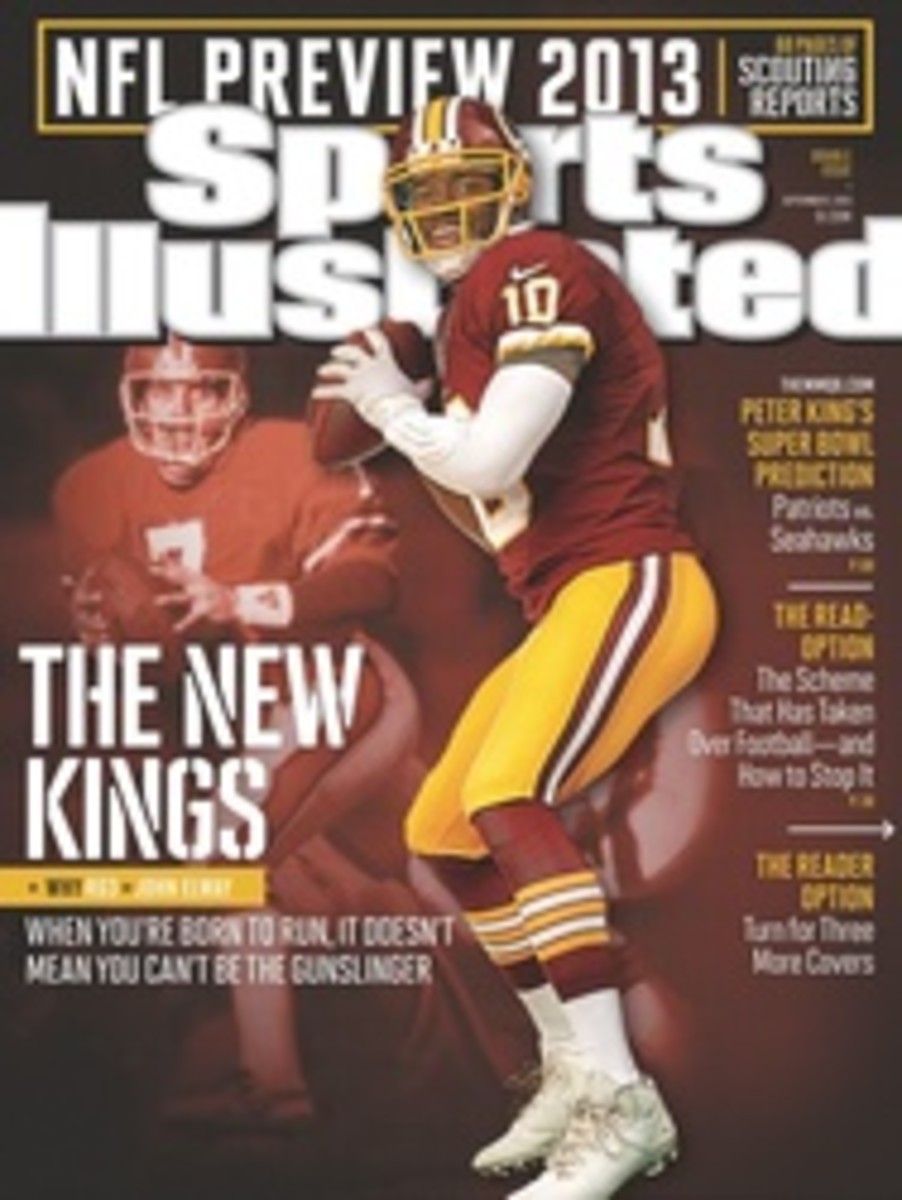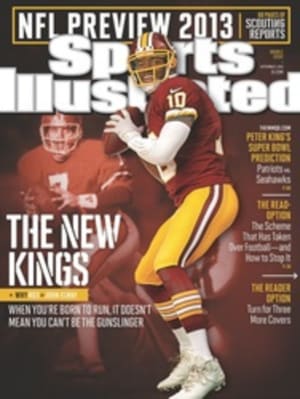
11 Tennessee TITANS
THE SELECTION of an offensive guard with the 10th pick of the draft by a team that ranked 26th in total offense does not often trigger outright celebration—such joy is more often saved for skill players. But Titans running back Chris Johnson knows better; on the evening Tennessee took All-America Chance Warmack with that selection, he tweeted, succinctly, "Thank God."
Which is to say that after a few seasons spent spreading the blame for his slip from CJ2K to something that at times more closely resembled CJ2YPC, Johnson was firmly on board with the Titans' off-season priorities. A month earlier, last March, Tennessee had landed the free-agent crop's top lineman, luring guard Andy Levitre away from Buffalo. The Titans secured Delanie Walker, a premier blocking tight end who spent the last seven seasons opening gaps for Frank Gore. And the team brought in veteran center Rob Turner to push incumbent Fernando Velasco. With the addition of Warmack and fourth-round center Brian Schwenke, from Cal, the Titans' rock-pounding identity came into focus.
The ground-and-pound mandate comes from the top, where Mike Munchak and Bruce Matthews, Hall of Fame guards for the then Oilers in the 1980s and '90s, have settled into their roles as head coach and offensive line coach. Entering year three, Munchak has taken a more hands-on role with his linemen, often splitting the group with Matthews during individual drills. Such one-on-one time with a head coach is rare for a lineman. "You can't ask for anything better than that," says left tackle Michael Roos.
Among Munchak's more macro challenges has been putting together a unit from pieces new and old, especially after Roos (sore back), Levitre (right knee), and right tackle David Stewart (right leg) all missed time during OTAs. For that reason, chemistry building—such as Levitre and Turner's camp outing to Martin's Bar-B-Que Joint outside Nashville—has been a high priority.
The early returns were somewhat encouraging. Johnson (who took his second preseason carry, against Washington, 58 yards for a TD) and free-agent signee Shonn Greene, a strong downhill runner, will put a steady hurt on opponents. But there have also been reminders that new talent alone does not transform a line. Offensive coordinator Dowell Loggains considers Warmack such a physical specimen that, he jokes, "even when he's wrong, he's gonna be O.K." However, that hasn't entirely been the case so far. The guard's growing pains were evident in the exhibition opener against the Redskins: He surrendered a sack on the third snap and, according to SI senior writer Greg Bedard's evaluation, graded negatively on 10 of his 28 plays.
Loggains has made clear Johnson's stake in Warmack's development, confirming that the offense's identity will center on Johnson. "When you don't know what's gonna happen in front of you, you start pressing," Johnson says, referring to the last three seasons, each of which the Titans have finished in the bottom half of the NFL in rushing. "You try to do too much. Now I feel like I can be more patient."
Loggains's plan to get the ball in Johnson's hands as much as possible means an increase, too, from the back's career-low 36 receptions last season. The idea here is less to call Johnson's number on pass plays than to encourage QB Jake Locker to check down to him in space when downfield options prove limited. Pulling opposing safeties toward the line of scrimmage sets up throws over the top to deep threats Kenny Britt and Kendall Wright, and an improved efficiency helps keep the Titans on the field longer than their league-low 27:41 average last season.
Like his coach, Locker is entering his third season, and his results have been mixed. His reads are wanting, especially under pressure. According to Pro Football Focus, he had a QB rating of 89.9 when he wasn't under pressure, a figure that plummeted to 38.7 against a rush. Loggains's new playbook includes bits of the pistol and the read-option, which accommodate Locker's strengths (his athleticism, speed and big arm), and he shifted from coverage-based reads to progression ones, such as those Locker used in college at Washington.
For a certain back looking for room to run, a functional passing game would be divine indeed.
THE CASE FOR ...
Defensive assistant Gregg Williams
The pairing may seem like one of mutual desperation, the defensive guru Williams returning to the NFL after a yearlong suspension for his role in the Saints' bounty scandal and joining the Titans, who gave up an NFL-worst 29.4 points per game last season. But Williams's hiring as a senior assistant to coordinator Jerry Gray is more than that. Tennessee will benefit from what the career coordinator typically brings to the table: pressure. Loads of it. According to Pro Football Focus, the Titans have ranked 22nd in blitz percentage on pass plays over Gray's two seasons leading the D, but Gray has lacked the personnel to justify such a straightforward approach. Facing a similar situation in New Orleans in 2010 and '11, Williams's Saints ranked second and first in blitz frequency, and his waves of attackers helped his units rank as high as fourth in total defense, in '10. In Tennessee, Williams will have Derrick Morgan, an emerging end who can disrupt the pocket on his own; Akeem Ayers, who's among the league's best pass-rushing 4--3 OLBs; and safety Bernard Pollard, an enthusiastic blitzer. No question: They'll have plenty of chances to get after the QB.
SINCE YOU'VE BEEN GONE
(N) NEW ACQUISITION
PHOTO
PATRICK MURPHY-RACEY FOR SPORTS ILLUSTRATED
RG CHANCE WARMACK
PHOTO
PATRICK MURPHY-RACEY FOR SPORTS ILLUSTRATED

